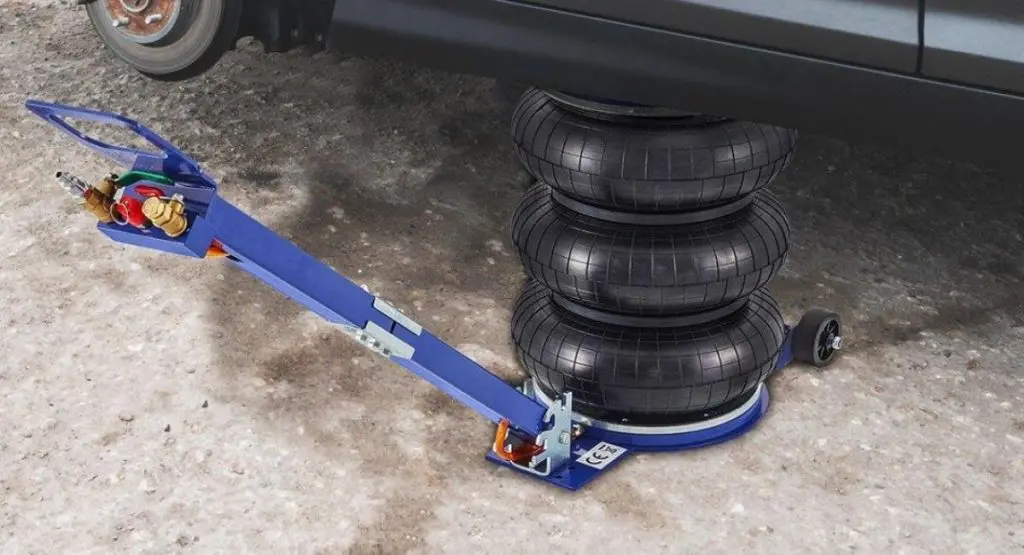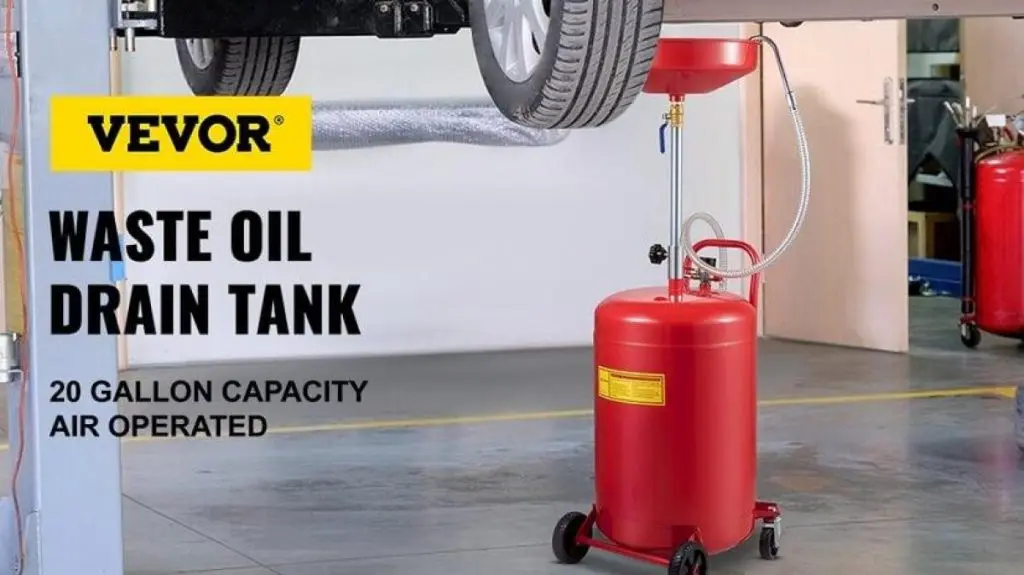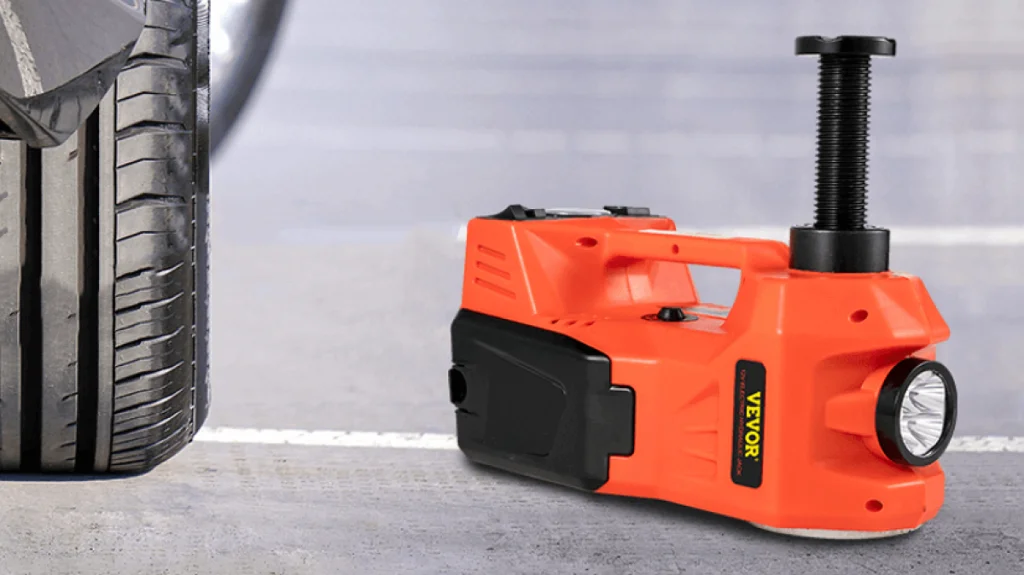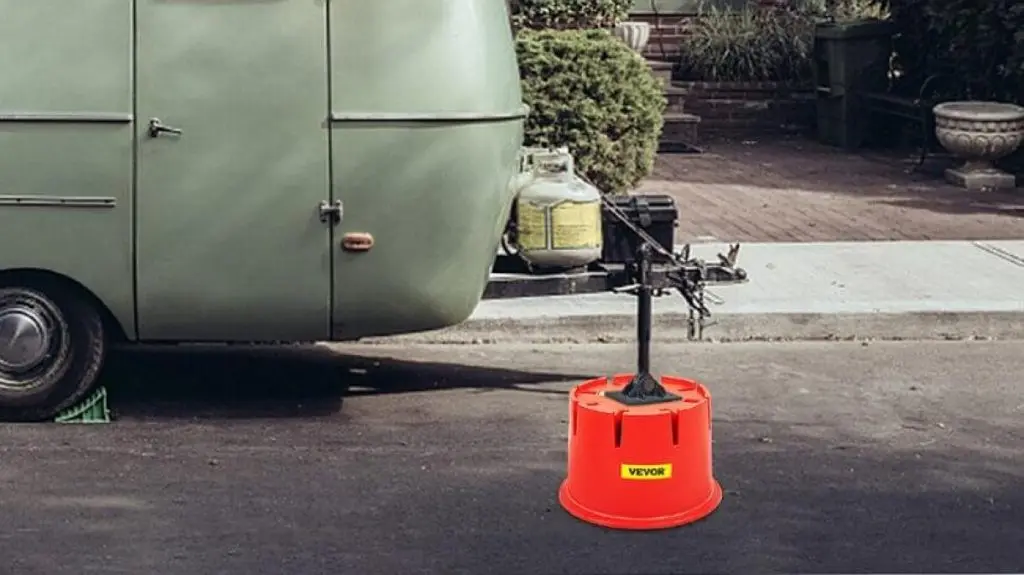Mounting a winch in a truck bed isn’t merely about preparing for off-road challenges or recovery situations; it transforms your truck into a versatile powerhouse for various activities. Mounted securely in the truck bed, the winch allows you to rescue fellow adventurers and even tow vehicles and effortlessly load and unload heavy objects such as ATVs, golf carts, and motorcycles into your truck.
If you are sold on the idea of a truck bed winch mount but do not know how to go about it, this guide is for you. In the following sections, we’ll delve into the specifics of mounting your winch, ensuring you have all the necessary tools and materials, and guiding you through the step-by-step process of mounting a winch in the truck bed. Additionally, we’ll address key safety considerations and answer frequently asked questions about mounting a winch in a truck bed.
So, let’s get started!
Table of contents
Can You Mount a Winch on a Truck Bed?
Absolutely! Mounting a winch in a truck bed is possible and a highly practical and beneficial upgrade. This versatile configuration offers several advantages:
Pulling equipment into your truck: Truck bed winch mount allows you to effortlessly load and unload heavy toys like ATVs, motorcycles, and even tractors into your truck. It is widely used to load non-operational vehicles onto tow trucks and trailers. It really comes in handy when you have to unload—back down on a steep ramp.
Safer: Mounting a winch in the truck bed is also safer than a front-mounted winch for the driver and your truck, especially when there is a possibility of the vehicle you are retrieving falling down.
Also, bed-mounted winches tend to have a longer lifespan because they are well-protected within the truck bed, unlike front-mounted winches, which are exposed to damage from impacts or collisions.
Solo Recovery: The truck bed winch mount is also better suited for solo recovery when you get stuck on your off-road adventures. When coupled with a front-mounted winch, bed winch mount makes you fully prepared for any challenge that might come your way on your off-road adventures.
While mounting a winch in your truck bed requires careful planning and execution, it ultimately offers a powerful and reliable solution for off-road enthusiasts, adventurers, and anyone who wants to be prepared for unexpected situations.
Tools and Materials Needed For Mounting a Winch in a Truck Bed
Before embarking on your winch installation adventure, it’s crucial to gather the necessary tools and materials. This ensures a smooth and successful process, allowing you to tackle the project with confidence.
- Socket wrench set: For tightening and loosening nuts and bolts during the mounting process.
- Drill and drill bits: For drilling holes, depending on your winch model and its mounting kit.
- Screwdrivers: For various tasks, including securing electrical components, mounting plates and accessories, and general fastening needs.
- Pliers: For wire management.
- Angle grinder: For cutting or grinding metal, depending on your specific installation needs.
- Level: To ensure proper winch alignment for optimal functionality.
- Safety glasses: To protect your eyes from flying debris.
- Work gloves: To protect your hands during the installation process.
- Mounting Plate: If one does not come with your winch, you may need one.
- Electrical tape: For securing and insulating electrical connections.
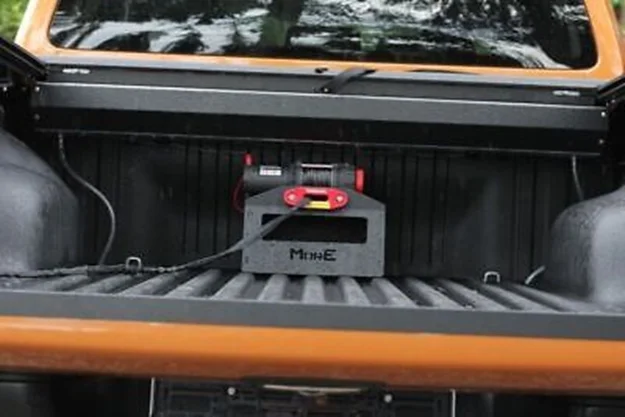
How to Mount a Winch in a Truck Bed
With the necessary tools and materials gathered, you can begin mounting the winch in a truck bed by following the easy steps discussed below.
1. Prepare the Truck Bed
Here’s what preparing the bed truck looks like:
- Clear the truck bed: Remove any items or obstacles that might interfere with the mounting process.
- Pick a spot: Pick a suitable spot for mounting the winch in the truck bed. Get underneath your truck to survey the structure underneath your truck bed. You need to make sure that if you drill into the truck bed, it does not hit anything—wires or frame. Also, ensure that you are able to fasten the bolt to secure the winch effectively.
- Clean the mounting area: Ensure the area where you’ll mount the winch is free of dirt, debris, and rust.
- Mark the mounting holes: Carefully position the mounting plate according to the instructions provided with your winch kit. Use a marker to mark the locations for drilling holes. You may also consider first marking hole locations on cardboard and then marking on the truck bed.
2. Drill the Mounting Holes
Follow the following steps for drilling the mounting holes:
- Double-check your measurements: Before you begin drilling holes, double-check your measurements and only proceed after verifying that the marked locations for drilling are accurate and align with the mounting plate and the winch.
- Select the appropriate drill bit: Choose a drill bit suitable for the material of your truck bed.
- Drill the holes: Carefully drill the holes according to the marked locations and instructions.
3. Install the Winch Mount Plate
It’s time to install the winch mount plate:
- Position the mounting plate: Place the mounting plate over the drilled holes, aligning it with the marked locations.
- Secure the mounting plate: Use the provided bolts, nuts, and washers to fasten the mounting plate to the truck bed securely.
4. Mount the Winch
Once the mounting plate is installed, let’s mount the winch.
Here’s how you do it:
- Position the winch on the mounting plate: Carefully place the winch onto the mounted plate, aligning its mounting holes with the corresponding holes on the plate.
- Secure the winch: Use the provided bolts, nuts, and washers to fasten the winch to the mounting plate securely. Ensure all bolts are tightened to the recommended torque specifications.
5. Connect the Electrical Components
Let us say this again: Make sure that the winch is securely mounted. If it is secure, go for connecting the electrical components.
- Install the solenoid: Mount the solenoid in the designated location near the battery and connect the positive and negative power cables according to the instructions.
- Connect the control box: Install the control box in a convenient location and connect the cables to the appropriate terminals on both the winch and solenoid.
- Test the winch: Once you have secured all the electrical connections, test the winch operation by activating the control box. Before proceeding, ensure the winch functions properly in both forward and reverse directions.
6. Install the Fairlead
You are almost done. Just a few more steps:
- Position the fairlead: Mount the fairlead on the winch, ensuring it aligns with the cable exit point.
- Attach the cable: Securely attach the winch cable to the fairlead using the provided thimble and pin.
7. Final Step
It’s mounted and done. Let’s do some finishing:
- Organize the wiring: Securely bundle and organize the winch’s electrical wiring using a wire loom to prevent damage and ensure a clean installation.
- Apply rust protection: Apply a coat of rust proof paint or sealant to the mounting hardware and exposed metal surfaces to prevent corrosion.
- Test and inspect the installation: Double-check all connections and ensure the winch is securely mounted and functioning properly before heading on an adventure.
Need more help mounting the winch in the truck bed? Check out this video to see how the VEVOR 13,000 lbs Electric Winch is installed on a Ford F-150.
Safety Considerations
While truck bed winch mount can be an invaluable tool for off-road adventures and recovery situations, poor and careless installation may prove hazardous for all those involved. Here are a few safety measures that you need to take when mounting a winch in a truck bed:
1. Always Wear Gloves
Before you even begin mounting a winch in a truck bed, ensure you have your protective gloves on. The winch is heavy, and accidents during its handling could result in injuries. Wearing gloves would protect you against these injuries and frayed winch cables that could have razor-like sharpness. Also, a winch in motion can pull your fingers into the drum, damaging your fingers horribly. So, make sure that you always have your gloves on.
2. Take Your Time
Do not rush the setup. Take your time, lay out everything that came with the winch—rings, cables, screws, and other parts—and take a good look. Follow the easy winch installation steps discussed above or in the manual that came with the winch to ensure that you easily mount the winch in the truck bed for safe and successful winching operations.
3. Choose Synthetic Rope
Use a synthetic rope for your winch. It’s lighter and easier to spool (wind) than other types of ropes. Also, it does not sink in water and does not whip back like steel wire on breaking.
4. Beware of the Load Capacity
Be aware of the winch’s load-pulling capacity as well as the load-bearing capacity of your truck bed. Neither exceed the winch’s maximum pulling capacity nor the load-bearing capacity of the truck bed. Doing so can lead to equipment failure and pose a risk of accidents and injuries.
5. Re-coil the Winch Wire Regularly
Do not use a winch rope straight out of the box. Consider spooling it a couple of times under a bit of weight before putting it to actual work. To keep it in good shape, also consider recoiling it regularly between uses.
6. Electrical Safety
Before making any electrical connections, double-check that you are making the correct connections—positive to positive, negative to negative, and ground to ground. Ensuring proper polarity is fundamental for the safety and functionality of your equipment. Incorrect connections can lead to electrical failures, potential damage to components, and even pose safety risks.
So, if you are unsure which wire goes where, consider referring to the manufacturer’s instructions and, if need be, take a professional technician’s help.
7. Testing and Troubleshooting
Before using the winch in actual situations, consider thoroughly testing it in controlled environments. If you suspect any issue during testing, refer to the manufacturer’s troubleshooting guide or seek assistance from a qualified technician.
Inspect the winch and cable regularly: Check for any signs of wear, damage, or fraying on the cable and ensure the winch is functioning properly before use.
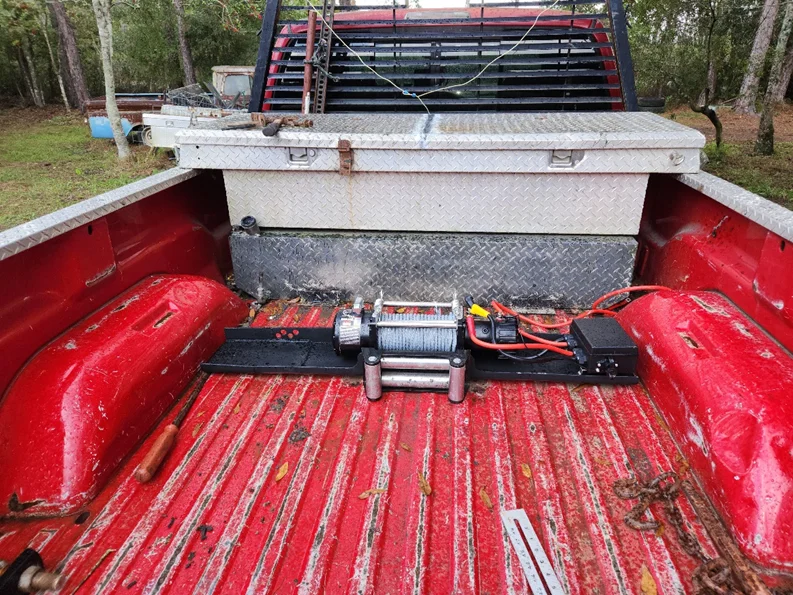
FAQs about Mounting a Winch in a Truck Bed
1. Can you mount a winch on the rear?
Yes, you can absolutely mount a winch on the rear of your truck. You can install it both in the truck bed as well as on the bumper. When mounting the winch on the bumper, you will have to get a customized bumper for mounting it.
2. Can you mount a winch upside down?
Yes, you can mount a winch upside down in most cases. While it’s not the typical way to mount a winch, it can be perfectly safe and functional depending on the specific winch and mounting location. Most modern winches, such as planetary winches, are designed to operate in any orientation—be it upside down or otherwise. But before mounting a winch on your truck upside down, make sure that you can access the levers and mounts that are level.
3. Is it worth having a truck bed winch mount?
Whether mounting a winch in a truck bed is worth it or not depends on your individual needs and driving habits. If you frequently venture off-road, tow trailers, load and unload heavy objects into the truck, or drive in challenging weather conditions. In that case, a winch can be an invaluable tool for self-recovery and assisting others. However, a winch may not be necessary if you primarily use your truck for everyday commuting or on-road driving.
4. Can you mount a winch on a truck bed without drilling?
Yes, you can mount a winch on a truck bed without drilling by using a no-drill winch mount. These mounts typically utilize existing holes in the truck bed and do not require drilling additional holes. But before you go with the no-drill mounting option, you should know that they are not very strong and secure. It is advised to have an anchor point in the truck bed to keep it from tipping over.
Conclusion
The truck bed winch mount empowers you with a versatile and powerful tool for off-road adventures, recovery situations, towing, and heavy loading and unloading. But for the winch to work effectively, you must mount it right. Follow the easy steps discussed in the guide above to ensure that you mount the winch the right way. It is properly secured and level. When mounting a winch in a truck bed, remember to prioritize safety at all times by following the guidelines and recommendations provided. Never forget to wear protective gear and double-wire connections for proper polarity.
If you are looking for a sturdy and reliable yet easy-to-install winch, check out the VEVOR 13,000 lb Nylon Rope Electric Winch. It is a versatile winch that can work with different types of vehicles, including ATVs, medium to large SUVs, trucks, and even yachts under its rated pulling force. Also, it features a 2-in-1 remote control, allowing you to operate it from a safe distance.

